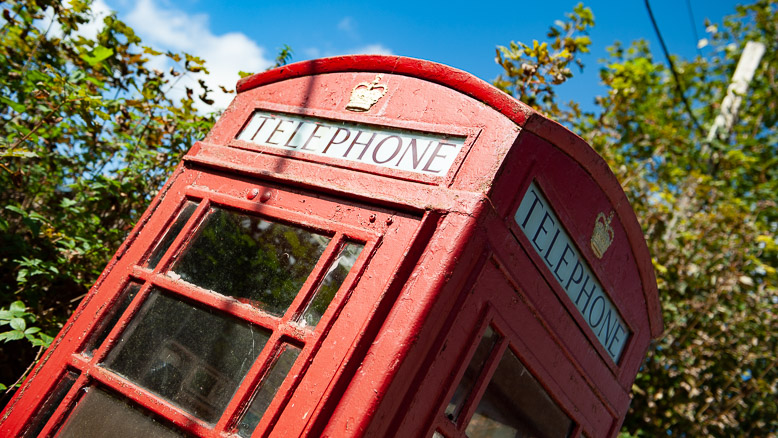The red telephone box is in danger of vanishing from our streets. Dartmoor’s red telephone boxes are slowly disappearing from our towns and villages. The style icon dating back over 80 years is a casualty of the advance of the mobile phone. The UK once had a network of 73,000 telephone boxes. By 2017 this had been reduced to around 40,000 with a further 20,000 due to be removed by 2022. With these stark facts in mind that I decided embark on a personal project to record for posterity the remaining red telephone boxes within the Dartmoor National Park.
Below I will give you a brief history of the K6 red telephone box, discuss how I prepared for my project. I will also tell you how I carried out the photography and show you the results of my effort.
A Brief History of the K6
The iconic red telephone box, designed by Sir Giles Gilbert Scott, first appeared on the streets of Britain back in 1925. The colour was chosen to make the kiosks easy to spot. The K6, literally Kiosk 6, is the sixth variant of Scott’s original K2 red telephone box. The design was introduced in 1936 and was used widely throughout the country. About 60,000 were eventually installed across the nation. The K6 design endured until the late 1960’s when a more modern red box was introduced.
The Fall of the Red Telephone Box
In the early 1980’s when the telephone network was sold off and privatised there was an initial outcry that the red boxes may be painted yellow, to match the new corporate colours of British Telecom. In the end only a few were painted different colours as an experiment. The fall of the red kiosk began in earnest in 1982 when BT introduced the KX100 box. The modern glass design gave better access for wheelchairs and was easier to keep clean. The red K6 began to disappear from towns and cities. About 2000 red boxes were given listed status to protect them. Meanwhile in many rural locations and low use areas the red telephone box remained in place. By the start of 2020 there were estimated to be only 8000 red telephone boxes left.
How to Find the Telephone Boxes
Before I embarked on my photographic project I had to locate all the telephone boxes within the boundary of the national park. We have unenviable maps in the Ordnance Survey series but these proved to have errors and omissions that really surprised me. I used a combination of the Explorer (1:25,000 scale) and Landranger (1:50,000 scale) maps. This gave me a draft list of locations to start. I knew from local knowledge that some kiosks had been omitted, particularly in built up areas. To track down these “ghost” phone boxes I used Google maps and Street View to recce likely locations. Combining both lists gave me a final master list of locations to plan my trips out.
Planning the Photography
As the phone boxes were spread across the 368 square miles of Dartmoor it was impossible to do all the photography in one day. I decided to split the moor into quarters and planned four trips out to cover each sector of moor. As it turned out I ended up having several more trips to mop up locations that were obstructed.
The Results
During my trips out I sadly discovered that many of the telephone boxes on my list had already been removed. Looking online using Google street view confirmed this to be the case where the boxes were still in place when Google did it’s survey. By the end of my project I had photographed 68 red telephone boxes. Seen many that were still in use, many that had been repurposed and sadly many more that were empty and awaiting either local adoption or removal.
The Photographs
The photographs are spread over two pages in alphabetical order of location, please use the links below to browse.
Please Click Here to access an interactive map and further details about the location and status of the phone boxes in this project.






